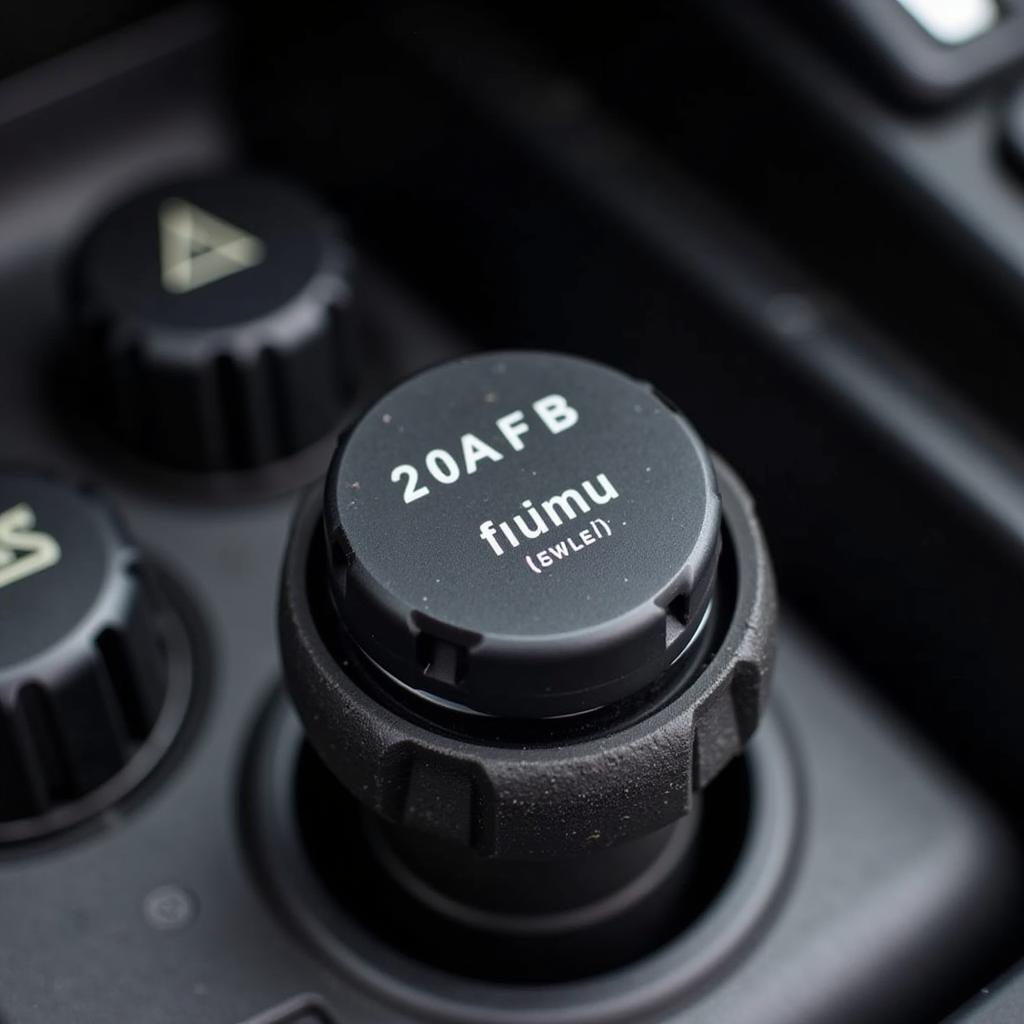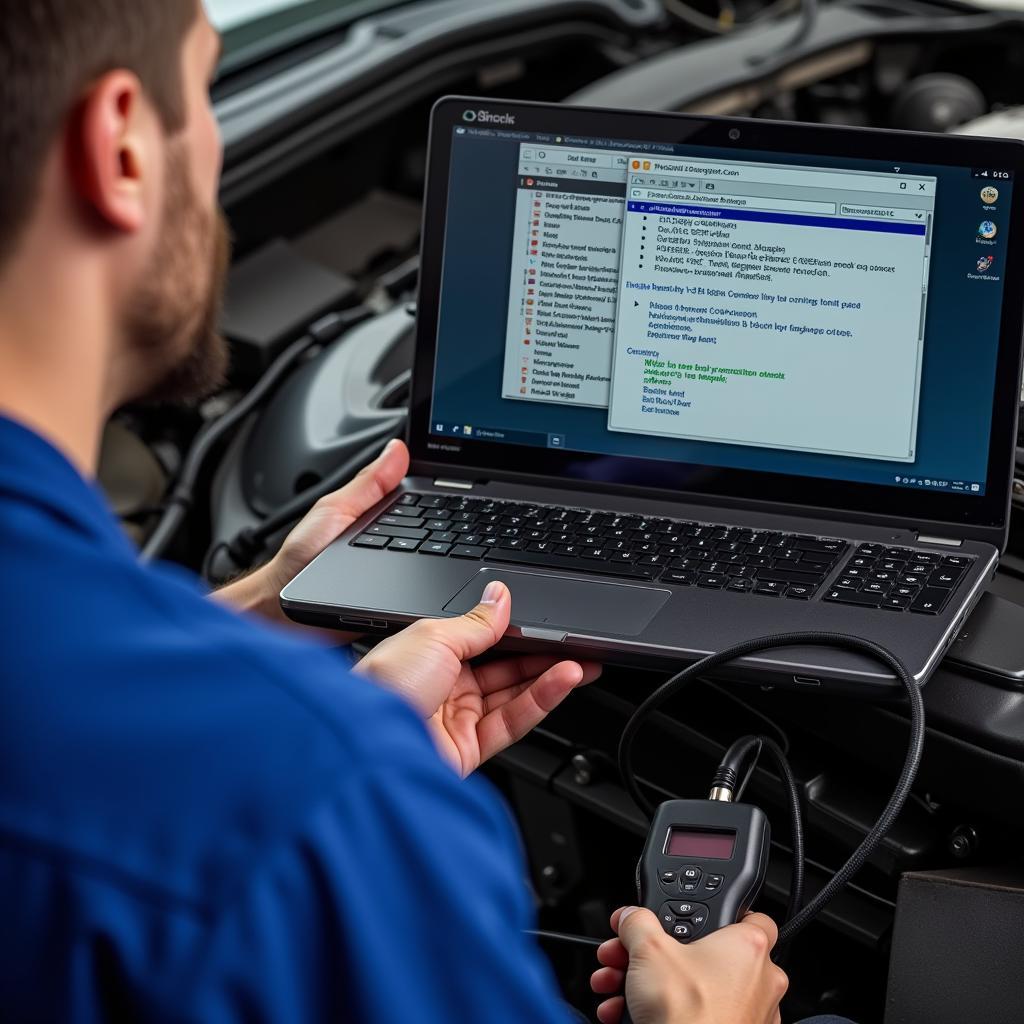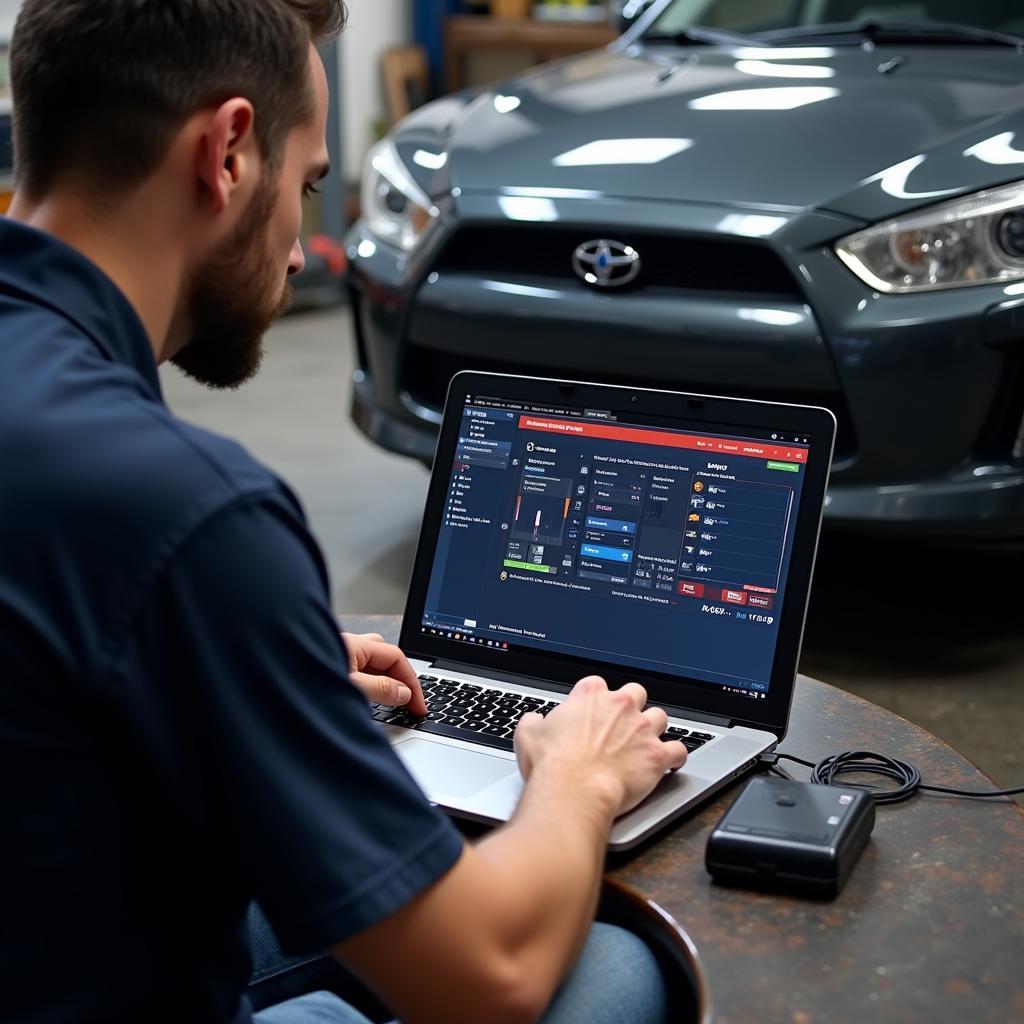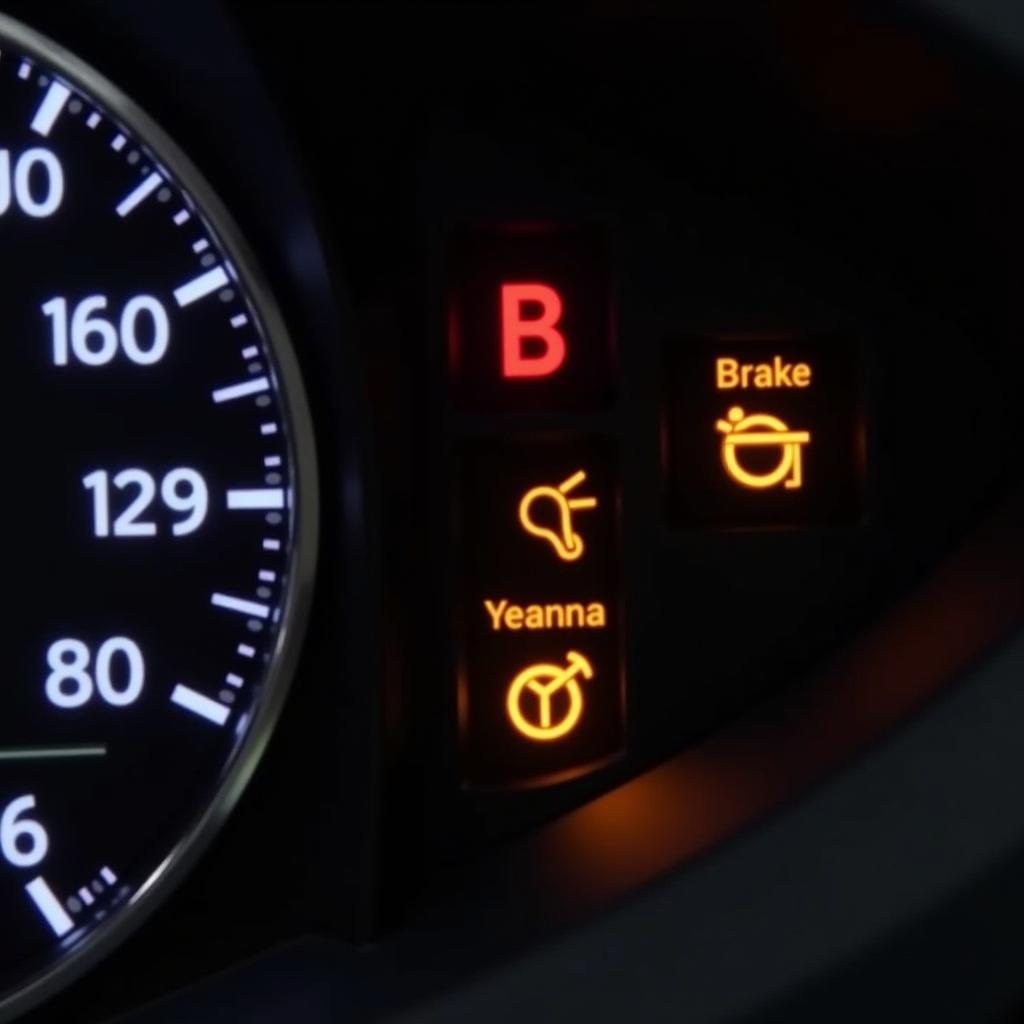The brake warning light, that little illuminated symbol on your dashboard, can be a source of anxiety for any driver. While its appearance doesn’t always signal a catastrophic issue, ignoring it is never the answer. “The brake warning light means __” is a question that pops up frequently, and understanding the potential reasons behind its illumination can save you from costly repairs and ensure your safety on the road.
Why is My Brake Warning Light On?
Several factors can trigger the brake warning light, ranging from simple fixes to more serious mechanical failures. Let’s break down the possibilities:
1. Engaged Parking Brake
This is the most straightforward scenario. Always ensure your parking brake is fully disengaged before driving. Sometimes, even a slight lift of the lever can trigger the light.
2. Low Brake Fluid Level
Brake fluid is the lifeblood of your car’s braking system. A low fluid level often indicates a leak, which needs immediate attention.
 Checking Brake Fluid Level
Checking Brake Fluid Level
3. Worn Brake Pads
Brake pads are designed to wear down over time. When they reach a certain thickness, a sensor triggers the warning light, indicating it’s time for a replacement.
4. Brake System Leak
A leak in your brake lines, calipers, or wheel cylinders can lead to a loss of brake fluid and pressure, significantly compromising your ability to stop safely.
5. ABS Issue
Modern vehicles are equipped with Anti-lock Braking Systems (ABS) for enhanced safety. If the ABS module detects a malfunction, it can trigger the brake warning light. This usually requires a professional diagnosis using a scan tool.
 Diagnosing ABS Issue
Diagnosing ABS Issue
6. Faulty Brake Light Switch
While less common, a malfunctioning brake light switch can cause the brake lights to stay on continuously or not illuminate at all, also triggering the warning light.
What to Do When the Brake Warning Light Comes On
“Ignoring a brake warning light is like ignoring a ticking time bomb,” says automotive expert, Sarah Jenkins, lead mechanic at City Auto Repair. “Even if the issue seems minor, it’s crucial to address it promptly to avoid potential hazards.”
Here’s a step-by-step guide on what to do:
-
Safely pull over. If the warning light illuminates while driving, find a safe location to stop and assess the situation.
-
Check your parking brake. Ensure it’s fully disengaged. If the light turns off, you’re good to go.
-
Inspect the brake fluid level. If you’re comfortable, carefully check the brake fluid reservoir under the hood. If it’s low, add the correct type of brake fluid but seek professional assistance to diagnose the cause of the low level.
-
Don’t drive further if unsure. If the light persists or you suspect a more serious issue, it’s best to err on the side of caution. Call a tow truck and have your vehicle transported to a trusted mechanic.
Remote Diagnostics: A Modern Solution for Brake Warning Lights
In today’s tech-savvy world, remote diagnostics are emerging as a convenient and efficient solution for addressing car troubles. By remotely accessing your vehicle’s computer system, qualified technicians can often diagnose the cause of a brake warning light without you having to visit a repair shop.
 Remote Car Diagnostics
Remote Car Diagnostics
This technology can save you time, money, and the hassle of traditional repair visits.
Conclusion
The brake warning light is your car’s way of saying, “Pay attention! Something needs attention.” By understanding the potential causes and taking appropriate action, you can ensure your safety and keep your vehicle running smoothly. Remember, timely maintenance and professional assistance are essential when it comes to addressing brake system issues. Don’t ignore this critical warning—your safety depends on it.

